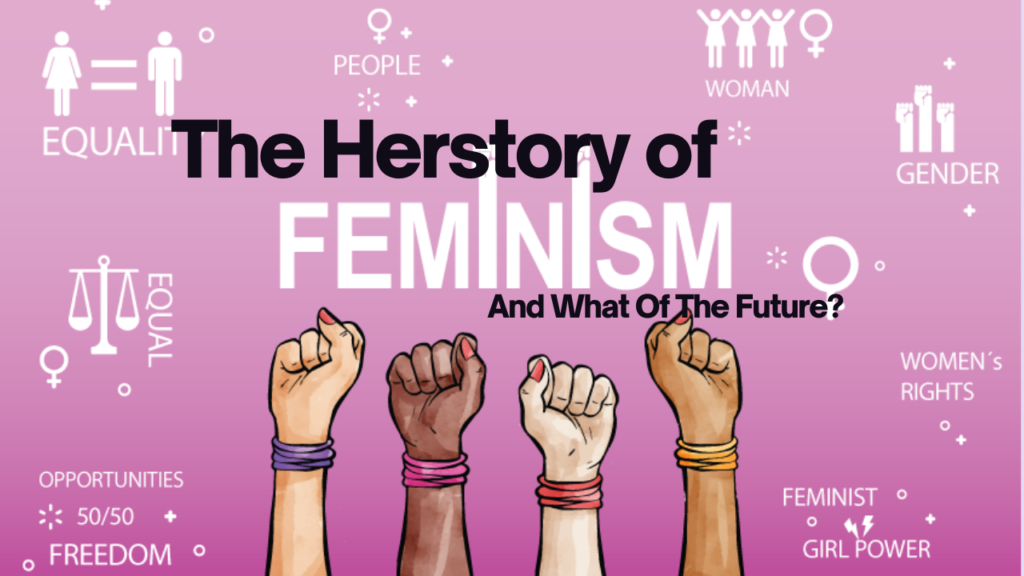
The herstory of feminism in Australia is a testament to the strength and resilience of Australian women. From the suffragettes who fought for the right to vote to the modern-day activists pushing for gender equality, Australian feminists have made significant strides.
The herstory of feminism is a rich and complex topic that spans across different time periods and regions. Feminism is the belief in social, economic, and political equality of the sexes, and it has manifested worldwide through various institutions committed to women’s rights and interests.
Feminism is typically separated into three waves. The first wave, which took place from the late 19th century to the early 20th century, focused on property rights and the right to vote. The second wave, from the 1960s to the 1980s, emphasised equality and anti-discrimination. The third wave, starting in the 1990s, addressed a wide range of issues, including intersectionality and the diversity of women’s experiences.
Throughout history, major issues in feminism have included suffrage, women’s partisan activism, economics and employment, sexualities and families, war and peace, and the pursuit of constitutional amendments for equality.
Historical Context
The feminist movement in Australia has a rich and complex history that dates back to the late 19th century. It was during this time that suffragettes emerged, fighting for women’s right to vote. Their relentless efforts resulted in Australia becoming one of the first countries to grant women suffrage in 1902, setting a precedent for future feminist movements. This landmark achievement paved the way for women’s participation in politics and laid the foundation for the ongoing fight for gender equality.
First Wave Feminism
The early 20th century witnessed the rise of first wave feminism in Australia. Women activists focused on a wide range of issues, including better working conditions, equal pay, and access to education. They played a significant role in the labour movement, advocating for the rights of all workers and challenging gender-based discrimination in the workplace. Women like Vida Goldstein and Rose Scott were instrumental in advocating for women’s rights and challenging the patriarchal norms of the time.
Second Wave Feminism
The 1960s and 1970s marked the second wave of feminism in Australia. This period saw a renewed sense of energy and determination as feminists addressed reproductive rights, challenging traditional gender roles, and advocating for greater gender equality. The establishment of the Women’s Liberation Movement (WLM) in the 1970s united women from diverse backgrounds, fighting against domestic violence, sexual harassment, and gender-based discrimination. This wave of feminism brought about significant changes in Australian society, including the introduction of anti-discrimination laws and the recognition of women’s rights in various areas of life.
Recent Developments
In recent years, Australian feminists have continued to make strides in the fight for gender equality. The #MeToo movement, which gained global momentum, had a profound impact in Australia, sparking conversations about sexual harassment and assault. It led to increased awareness and a demand for change, pushing for a safer and more equitable society. Australian women from all walks of life shared their stories, shedding light on the pervasive nature of gender-based violence and the need for systemic change. This movement has given rise to a collective voice that refuses to be silenced, and has inspired a new generation of activists to continue the fight for gender equality.
Future Outlook of Feminism
The future of feminism in Australia looks bright, but there is still work to be done. In order to achieve true gender equality, it is important to address the structural barriers that continue to limit women’s opportunities and experiences. This includes tackling issues such as the gender pay gap, workplace discrimination, and the underrepresentation of women in leadership positions.
It also requires ongoing efforts to challenge societal norms and expectations that reinforce gender stereotypes and limit the choices available to women. By continuing to raise awareness, advocate for change, and support each other, we can create a society where everyone has equal rights and opportunities, regardless of their gender. The journey continues, and the future is filled with hope and possibility.
Looking ahead, the future of feminism in Australia is promising. Activists are focused on addressing ongoing challenges and creating a society that is more inclusive and equitable. Intersectional feminism, which recognises the interconnected nature of different forms of oppression, is gaining prominence. The voices and experiences of marginalised women, including Indigenous women and women of colour, are being centred in the movement to ensure that no one is left behind. This intersectional approach acknowledges the unique challenges faced by different groups of women and seeks to dismantle the intersecting systems of oppression that perpetuate inequality.
In conclusion, the herstory of feminism in Australia is a powerful narrative of progress and resilience. From the suffragettes to the modern-day activists, Australian feminists have fought tirelessly for gender equality. While there have been significant achievements, the journey is far from over. By building on the foundations laid by previous generations and embracing intersectionality, we can create a future where all individuals are valued and empowered, regardless of their gender. Together, we can shape a society that is truly inclusive, equitable, and just.

